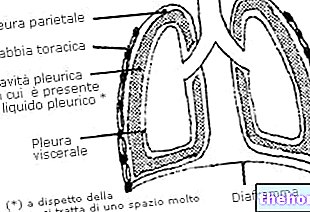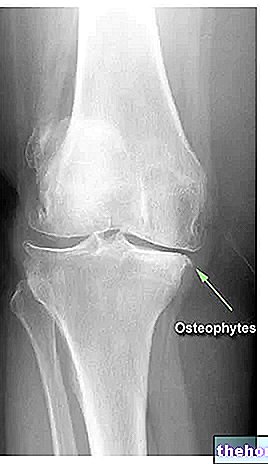Generality
Still's disease is a chronic inflammatory disease very similar to rheumatoid arthritis.

Given that the symptoms resemble those of many other pathologies, making a correct and early diagnosis is not easy: in fact, before making a pronouncement, the doctor must carefully evaluate numerous parameters.
Still's disease is currently incurable, however there are pharmacological treatments that manage to control the symptoms and slow their progression. If the patient follows the doctor's advice, his standard of living is only moderately compromised by the disease.
So is Still's disease
Still's disease - whose full name is adult-onset Still's disease - is a chronic, systemic inflammatory disease characterized primarily by high fever, salmon-colored skin rash, sore throat and joint pain.
Because of its similarity to rheumatoid arthritis, Still's disease is also considered a particular form of arthritis.
N.B: by systemic inflammatory disease, s "means a disease characterized by an inflammatory state that affects several parts of the body (one or more systems).
Some diseases similar to Still's disease:
- Rheumatoid arthritis
- Systemic lupus erythematosus
- Crohn's disease
- Lyme disease
THE YOUTH FORM
Alongside the adult form, there is also a juvenile form of Still's disease, characterized by slightly different symptoms and known more as juvenile rheumatoid arthritis (or systemic arthritis) than juvenile Still's disease.
EPIDEMIOLOGY
Still's disease is an uncommon disease: in fact, about one person in every 100,000 gets sick every year.
According to some statistical surveys, there are two age groups most affected by the disease: one is positioned between 15 and 25 years, the other between 36 and 46 years.
There appears to be a marked preference for female individuals, but the reason for this still remains to be explained.
Still's disease can be ruled out as a hereditary disorder, given the small number of times more than one case has been recorded in the same family.
Causes
The causes of Still's disease are unknown.
According to some theories, it seems that some type of infection, viral or bacterial, is the trigger for the disease.
However, there is no evidence for this.
Symptoms and Complications
Still's disease manifests itself in different ways from patient to patient: some undergo a drastic worsening; others improve suddenly and for no reason; still others alternate periods with symptoms to periods without any pathological disturbance.
TYPICAL SYMPTOMS
The most common and characteristic symptoms and signs of Still's disease are:- Burning throat. It is usually the first symptom that appears in the affected individual. The sensation experienced is of a strong burning pain. Furthermore, the appearance of this disorder coincides with the swelling of the lymph nodes in the neck.
- High fever. It is not constant throughout the day, but rises suddenly, up to 38.5-39 ° C, in the late afternoon or in the evening; in some cases, even two daily rises can be recorded, separated by a period of time in which the temperature returns to normal. The duration of this disorder is generally one week, but it can also last longer, depending on how the body responds.
- Salmon-colored skin rash. The skin becomes - suddenly and coinciding with the fever peaks - salmon pink. The rash manifests itself as flat and / or raised patches, usually appears on the trunk, arms and legs, and does not cause any itching. Even involuntary rubbing of the skin can trigger the appearance of the rash.
- Pain, swelling and stiffness in the joints. In the beginning, the affected joints are only the knees and wrists; over time, the pain and swelling extend to the hips, elbows, hands and shoulders. Especially in the morning, the sense of stiffness is very strong and hard. for several hours Joint disorders last for at least a couple of weeks.
- Muscular pain. It alternates with fever, or when there is one, there is not the other. The painful sensation is so intense that it makes every day activity difficult, if not impossible.
Less common signs of Still's disease:
- Unexplained weight loss
- General enlargement of the lymph nodes
- Abdominal pain and swelling
- Breathing problems and coughing
- Enlarged spleen (splenomegaly)

WHEN TO SEE THE DOCTOR?
If symptoms such as high fever associated with salmon pink skin rash, joint pain, sore throat and cough are felt without a plausible reason, then it is good to contact your doctor for further examinations.
COMPLICATIONS
Complications related to Still's disease arise when the inflammatory state is not treated adequately or when the diagnosis is late: in these situations, the worst consequences are the joints or some organs of the body, such as the heart and lungs.
- Irreparable damage to the joints. Prolonged inflammation can permanently damage the joints. Those most at risk are the first ones that tend to show joint disorders, ie knees and wrists. It is rare, but possible, that the joints of the ankles and shoulders also deteriorate. and fingers.
- Inflammation of the heart. The generalized inflammatory state can extend to the heart, causing pericarditis (ie an "inflammation of the membrane, the pericardium, which surrounds and protects the heart) or myocarditis (ie an" inflammation of the heart muscle). The main symptoms are chest pain, shortness of breath, dry cough and swelling of the abdomen.
- Pleural effusion. Due to an "inflammation of the pleura (pleurisy), it is the accumulation of fluid inside the pleural cavity, ie the space between the pleura and the lung."

The main symptoms are chest pain, difficulty taking deep breaths, wheezing and dry cough.
Diagnosis
Still's disease is difficult to diagnose, as the symptoms it causes are very similar to those of other diseases and infections, such as some cancers, Crohn's disease or Lyme disease.
To identify the disorder and to rule out similar diseases, various radiological and blood tests are available to the doctor.
OBJECTIVE EXAMINATION
The physical examination represents, as often happens, the first step of the diagnosis process.
The doctor assesses the patient's state of health, analyzes the symptoms and investigates their clinical history.Although, in fact, the causes of Still's disease are still unknown, it is known what can cause diseases with similar symptoms, such as Crohn's disease or Lyme disease.
BLOOD TESTS
The collection and analysis of a blood sample can provide useful diagnostic information: in fact, if Still's disease is in progress, the blood has certain characteristics, which, conversely, it would not have if it were a "different disease. similar symptoms.
Here are the peculiarities of the blood sample:
- High number of white blood cells (leukocytes)
- Low number of red blood cells (erythrocytes)
- High levels of C-reactive protein (CRP)
- High erythrocyte sedimentation rate (ESR)
- Nuclear antibody control negative (this, for example, is positive in systemic lupus erythematosus)
- Control of rheumatoid factor is negative
- High levels of transaminases
- High levels of ferritin and fibrinogen
RADIOLOGICAL EXAMINATIONS
Useful radiological examinations, in case of suspected Still's disease, are:
- Ultrasound and CT scan (computerized axial tomography) of the abdomen: they show the appearance of the internal organs contained in the abdominal cavity. Any abnormalities, such as splenomegaly, are identified through these tests.
- Nuclear magnetic resonance (MRI) of the most painful joints: clarifies the origin of joint pain and what degree the associated damage has reached. The insult to the joints caused by a chronic inflammatory state is recognizable to an expert eye.
- Chest X-ray: Provides clear images of the heart and lungs. If present, pericarditis, myocarditis and pleurisy are easily detected through this control.
IMPORTANCE OF AN EARLY DIAGNOSIS
Some individuals with Still's disease, if they neglect the ailments or fail to treat themselves properly, may experience the above complications. Conversely, early diagnosis and adequate treatment significantly reduce the risk of these unpleasant consequences.
Treatment
Currently, there is still no cure that completely cures Still's disease.The only countermeasures available are drugs of various types, which serve the following purposes:
- Limit the symptoms
- Slow down the progression of the disease
- Prevent complications
- Improving the quality of life of patients
The choice of the most appropriate medicines is up to the doctor, who considers the severity with which the disease presents, at what time the diagnosis was made (early or late) and how the patient responded to previous treatments.
Generally, for chronic inflammatory diseases such as Still's disease, pharmacological treatments are taken by the patient for life: in fact, although they can be modified in dose or temporarily suspended, they are never permanently interrupted.
NON-STEROID ANTI-INFLAMMATORY DRUGS (NSAIDs)
NSAIDs, or non-steroidal anti-inflammatory drugs, are usually the first drugs prescribed by doctors when diagnosed with Still's disease.
Their purpose, as the name implies, is to reduce the generalized inflammatory state, when this is still moderate and does not create particular disturbances.
The most used NSAIDs, in these cases, are ibuprofen, naproxen and aspirin (in high doses).
The duration of the treatment cannot be quantified, except after observing how the patient responds to treatment: if the response is positive, the doses taken may gradually reduce or be suspended for a few days; conversely, if the benefits are few, it is necessary to continue with the therapy, or even replace it with something stronger.
The side effects, due to the intake of NSAIDs, concern the liver and its functions. In this regard, the medical advice to follow to prevent liver disorders is to undergo periodic blood tests.
CORTICOSTEROIDS
Corticosteroids are the strongest anti-inflammatory drugs with the best effects.
However, prolonged use can cause unpleasant and, in some cases, serious side effects, such as high blood pressure and diabetes mellitus.
Main side effects of corticosteroids:
- High blood pressure and water retention
- Hyperglycemia, insulin resistance and diabetes mellitus
- Osteoporosis
- Increased body weight, due to the increase in fat mass
- Swelling and facial tension
- Susceptibility to infections
- Susceptibility to injury (reduced resistance of tendons and ligaments)
- Psychosis
- Morning insomnia
This explains why, before they are taken, NSAIDs are administered, and why, once taken, they are kept at the minimum effective therapeutic dose.
One of the most commonly used corticosteroids in patients with Still's disease is prednisone.
IMMUNE SUPPRESSORS
Immunosuppressive drugs represent another possible therapeutic solution for those suffering from Still's disease.
Their function is to weaken the immune system. Normally, these defensive barriers serve to counteract external insults, bacterial and viral infections etc; however, after the appearance of certain pathological disorders (including Still's disease), they can "turn" against the organism and become responsible for a generalized inflammatory state.
Immunosuppressive medicines can be taken in combination with others of the same type and for long periods of time.
There are two possible routes of administration: by intravenous injection or by mouth.
Immunosuppressive drugs used against Still's disease:
- Methotrexate
- Hydroxychlorichine
- Sulfasalazine
- Azathioprine
- Cyclophosphamide
- Cyclosporine
- Anakinra
- TNF inhibitors (adalimumab, etanercept, and infliximab)
For further information: Drugs for the Treatment of Still's Disease "
REST AND WARNINGS
During the acute phase of the disease (i.e. when pathological disorders appear), it is good to observe a period of rest, in which heavy work or particularly stressful situations for the body should be avoided.
Furthermore, the possible cyclical course of Still's disease (for cyclic s "means that it alternates periods with symptoms and periods of remission in which the disorders disappear or become very mild) could lead the patient to think that he is cured and that he can stop the treatments. However, there is no more wrong choice than this, as the taking of drugs must be continued even in moments of apparent recovery.
Any decision to temporarily interrupt or modify treatments rests solely with the doctor, after appropriate clinical evaluation.
Prognosis
For incurable diseases, such as Still's disease or rheumatoid arthritis, the prognosis can never be positive. In fact, if it is true that they do not cause death, it is also true that they greatly influence the standard of living of the sick: these, in fact , are constantly under treatment (except for temporary drug suspensions) and suffering from chronic disorders, due to the disease.
For a better prognosis, it is good to stick to the following medical advice:
- Before making any decisions about which medications to take, always consult your doctor. This behavior should be adopted in any situation, that is, both when symptoms worsen and when they suddenly improve.
- Adapt your diet to corticosteroid drugs by taking food supplements based on calcium and vitamin D. These serve to prevent or, at least, limit osteoporosis.
- Observe a period of rest during the acute phase of symptoms, but then it is good to keep active and moving to remedy the joint stiffness typical of Still's disease.





























